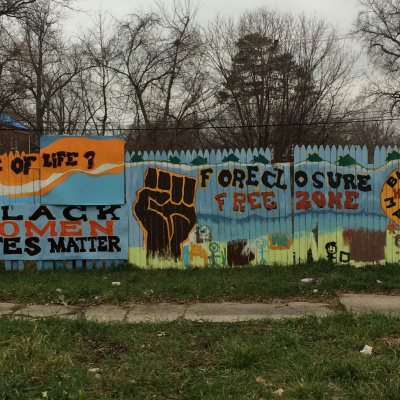“Black homes matter”: in the summer of 2015, this affirmation was painted on a fence erected by community members and volunteers from Detroit Eviction Defense next to a house whose owner was facing eviction. What can architectural history offer to a reading of this affirmation? I explore the intersection of race, space, and housing in the American city by focusing on “blight”: a term that has been deployed to characterize urban difference from the early 20th century into the present. Posed as “blight,” the uneven urban development endemic to capitalist urbanism was often refracted through white supremacist politics and framed as a “problem” that could be “solved” by city planning, zoning, urban renewal, and other technical means. In so doing, studies of and actions against “blight” masked contradictions in capitalist urbanism and spatialized race in uneven urban development.
Further reading: Herscher, Andrew. “‘Blight,’ Spatial Racism, and the Demolition of the Housing Question in Detroit.” In Housing After the Neoliberal Turn / International Case Studies / Wohnungsfrage, edited by Stefan Aue, Jesko Fezer, Martin Hager, Christian Hiller, Nikolaus Hirsch, Reinhold Martin, and Anne Kockelkorn. Spector Books, 2016.
